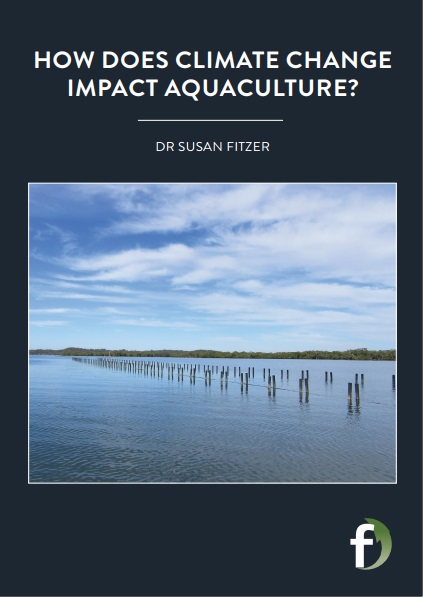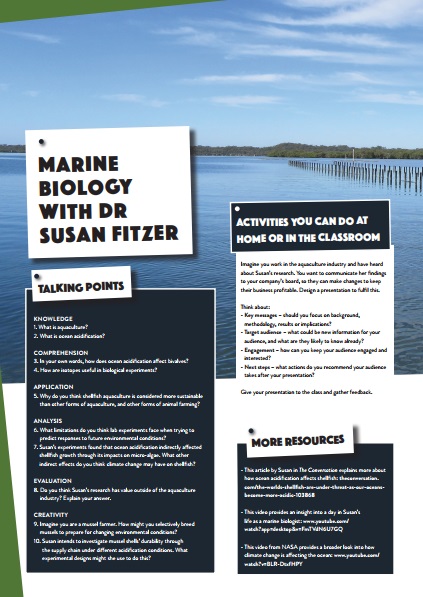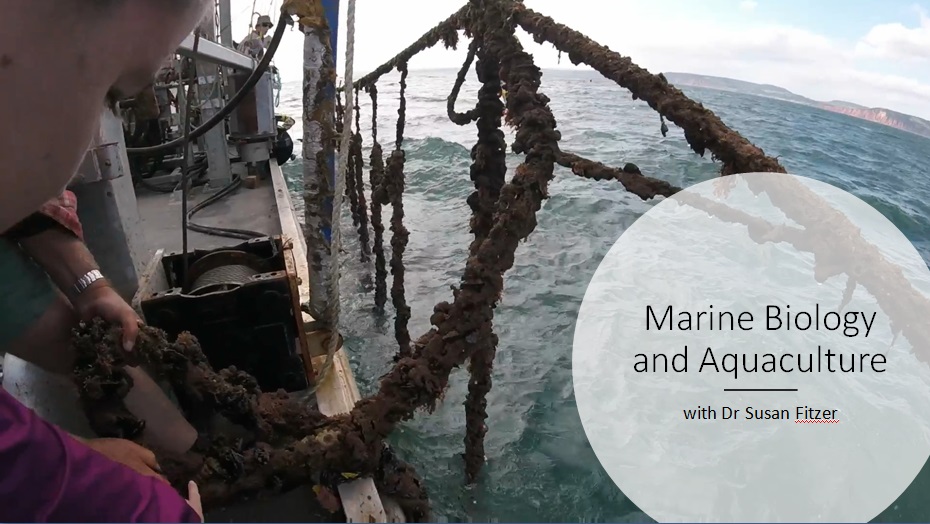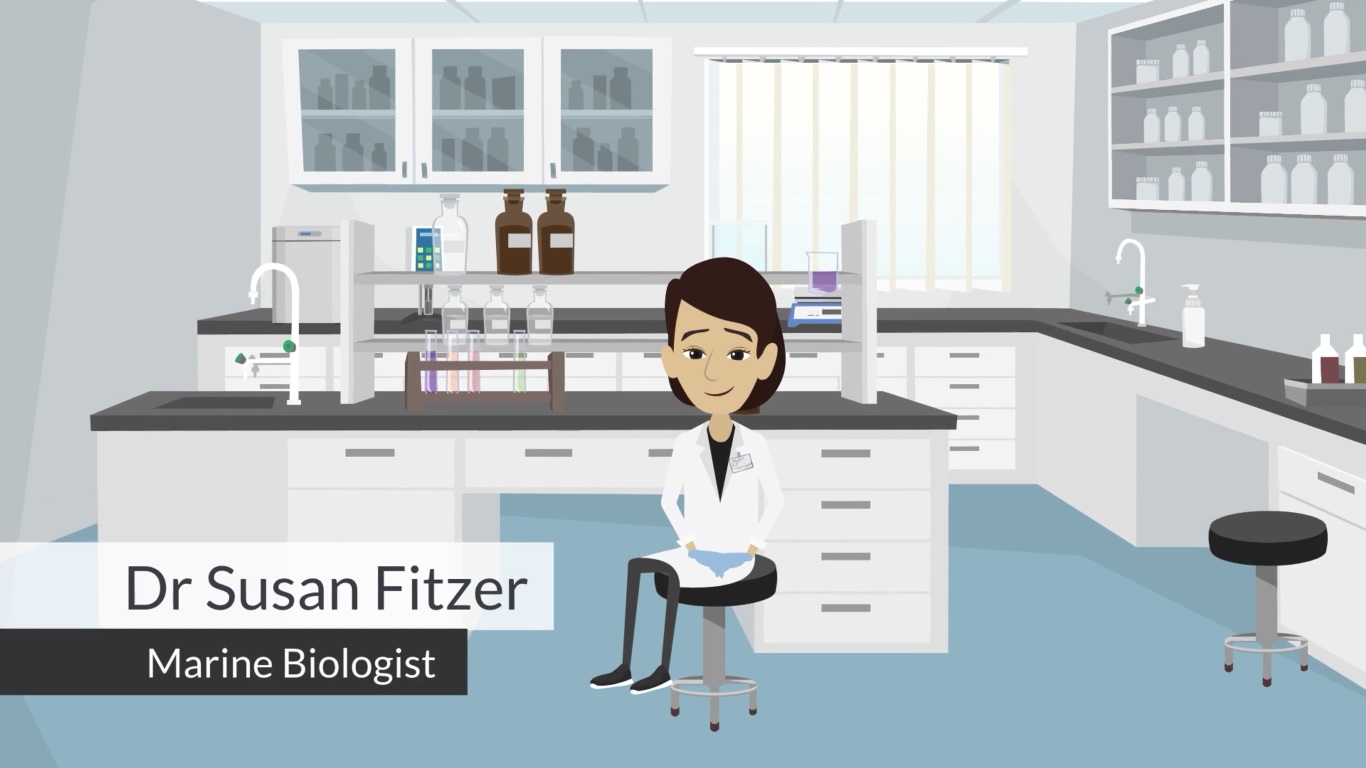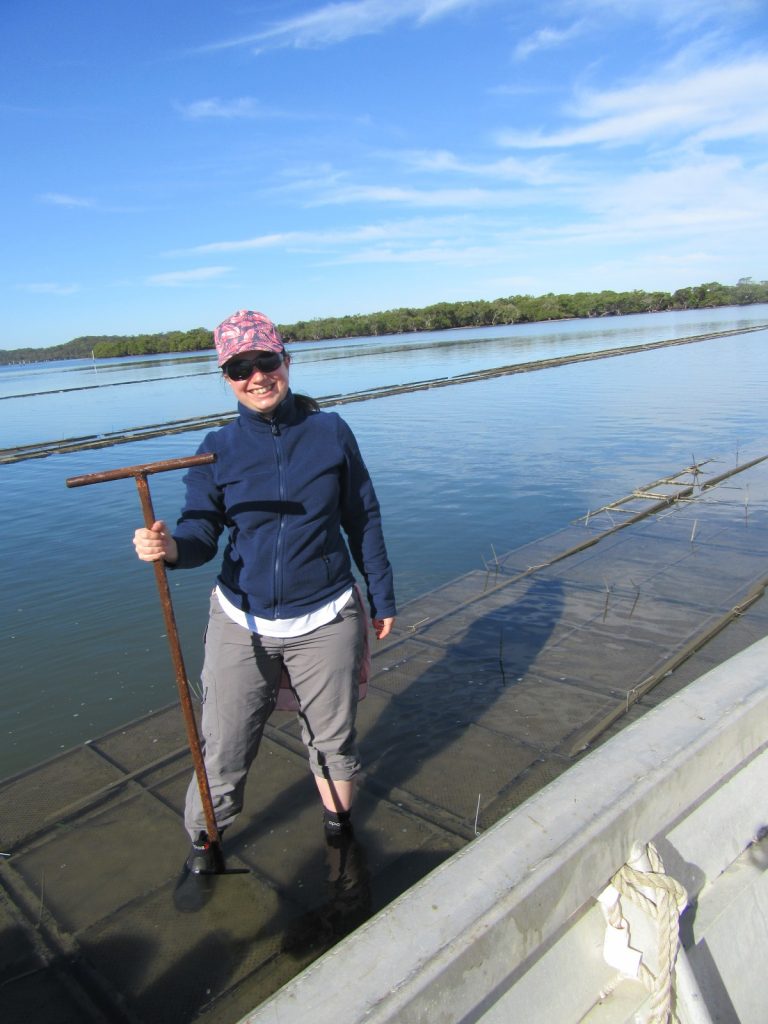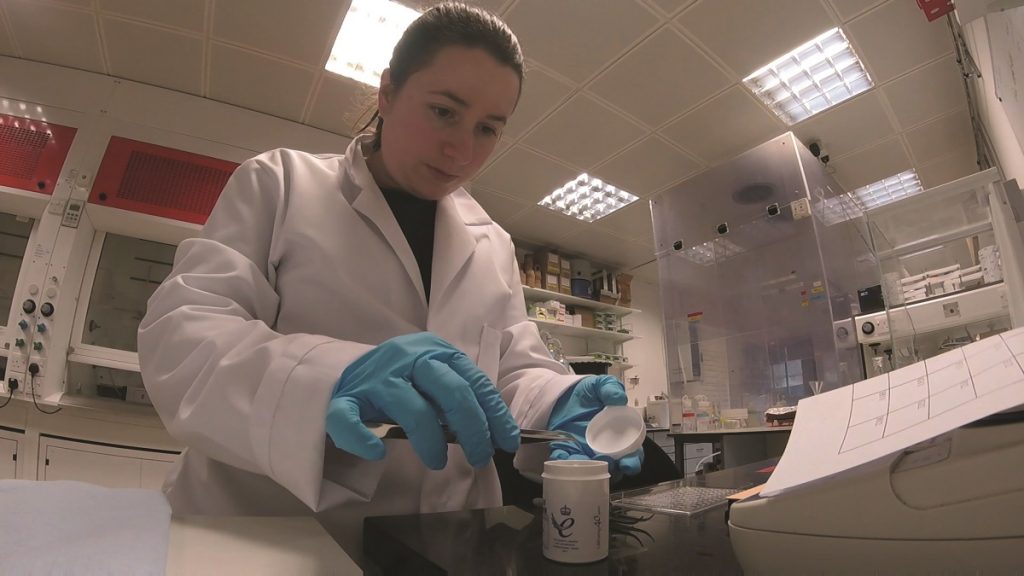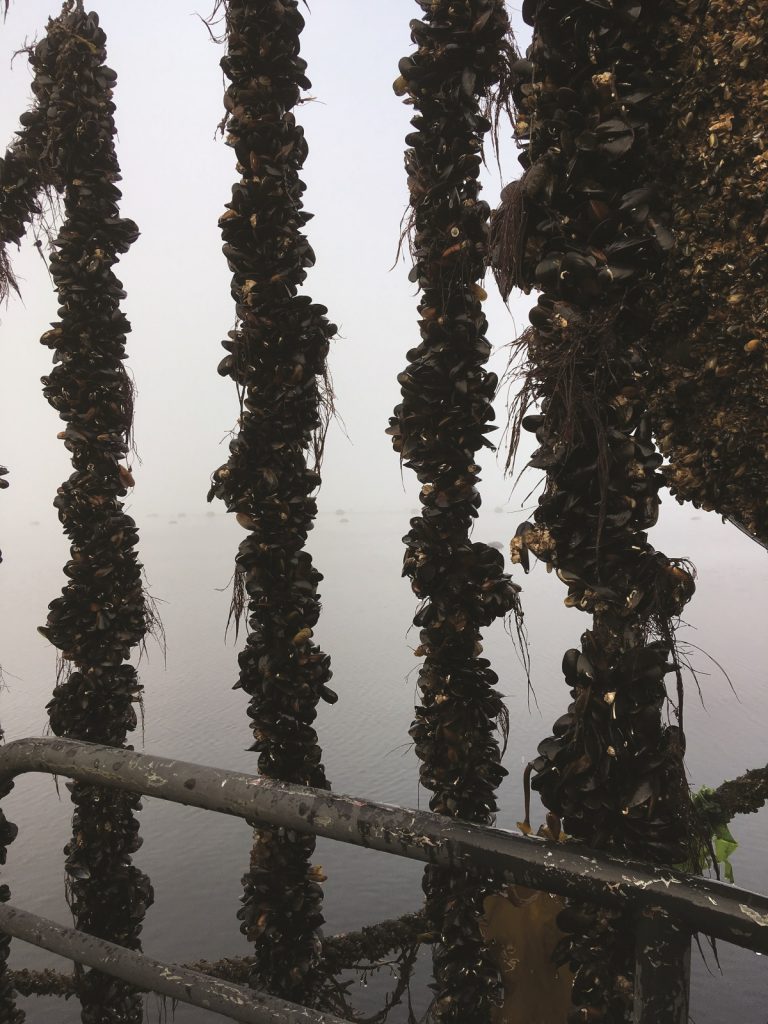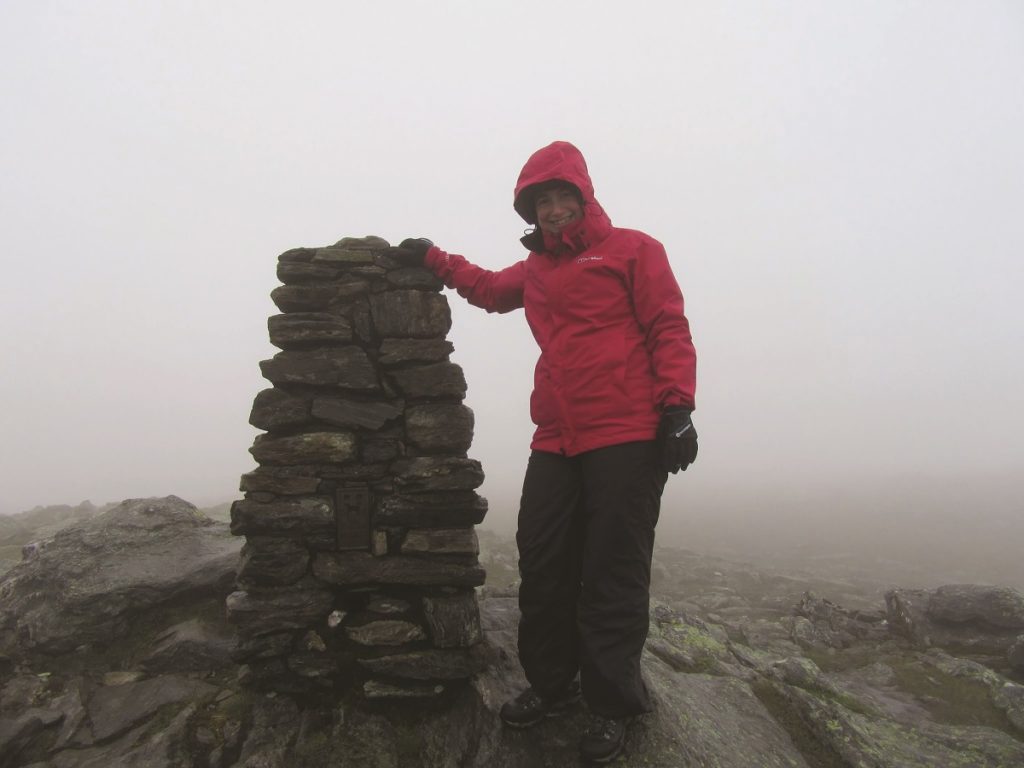How does climate change impact aquaculture?
One significant effect of climate change is that the ocean is becoming increasingly acidic. This has implications for marine life, including farmed shellfish such as oysters and mussels. Dr Susan Fitzer at the University of Stirling is investigating what climate change means for shellfish farming, and how aquaculture could adapt to keep thriving
TALK LIKE A MARINE BIOLOGIST
AQUACULTURE – the farming of aquatic animals or plants
BIOMINERALISATION – the process by which living organisms produce minerals
BIVALVE – a type of shellfish with a two-part hinged shell, including oysters, mussels and scallops
CARBONATE – an important mineral used to build calcium carbonate shells
HYPERCAPNIA – a build-up of carbon dioxide in the blood
ISOTOPE – forms of the same element with different numbers of neutrons
OCEAN ACIDIFICATION – a reduction in ocean pH, principally caused by the uptake of carbon dioxide
SHELLFISH – a collective term for aquatic shelled species including bivalves, other molluscs and crustaceans
Scotland is a world leader in aquaculture, including the farming of marine bivalves. These farms are found in sea lochs and bays around Scotland’s coast, where mussels, oysters and scallops are grown in seawater. Once harvested, the shellfish are sold to restaurants and retailers in the UK, Europe and beyond. Bivalve farming is often considered one of the most sustainable forms of animal protein production, but there are concerns that the industry could be threatened by the effects of climate change.
As more carbon dioxide enters the atmosphere, a significant proportion is absorbed by the ocean. Whilst this helps reduce the effects of global warming, it instead makes the ocean more acidic, which threatens a variety of marine ecosystems and the species that are found in them. This also applies to aquaculture, as shellfish are potentially some of the most vulnerable species to ocean acidification. Dr Susan Fitzer, who works at the University of Stirling’s Institute of Aquaculture, is studying the effects of ocean acidification on shellfish to help the aquaculture industry prepare for the future.
OCEAN ACIDIFICATION
Shellfish produce their shells using calcium and carbonate minerals as building blocks. This process of a living organism producing a non-organic product is known as biomineralisation. “Biomineralisation is used by marine invertebrates such as corals, sea urchins, mussels and oysters to produce protective structures in the form of calcium carbonate shells and skeletons,” says Susan. As well as serving a useful biological function, these shells are also important for aquaculture: strong shells lead to greater yields as fewer shellfish are lost to predators or storms, and fewer are damaged in the harvesting and transport process, too.
“Ocean acidification is caused by the ocean uptake of atmospheric carbon dioxide, which dissolves into seawater to form carbonic acid,” says Susan. “This reduces the pH of seawater, as well as reducing the carbonate available to produce calcium carbonate shells and skeletons.”
Ocean acidification affects shellfish in three main ways:
- Hypercapnia is the retention of carbon dioxide in an organism’s tissues. For shellfish, hypercapnia leads to reduced shell growth as energy is diverted to metabolic processes that are impacted by this carbon dioxide increase.
- Reduced carbonate in the seawater means there are fewer minerals available for shellfish to take up from the environment to build their shells.
- Acidic conditions can actively dissolve calcium carbonate shells and skeletons.
“There are two main forms of calcium carbonate shells: aragonite and calcite,” says Susan. “Species can use one or the other, or a mixture of the two.” Research has indicated that aragonite is more affected by ocean acidification than calcite, which means that species that primarily use aragonite are likely more vulnerable.
CARBONATE PATHWAYS
Susan’s lab is investigating how bivalves respond to ocean acidification, in particular how their shell-building process is altered. “Marine animals can source carbonate from several different routes,” she explains. “They can source it directly from seawater; produce hydrogen carbonate through a protein-mediated process; or take carbonate produced from metabolic processes directly from tissues.” Susan collects bivalves from the field and grows mussels and oysters in the lab to see how they respond to seawater of different acidities.
To work out where these bivalves are sourcing their carbonate from, Susan uses stable carbon isotopes (12C makes up 98.9% and 13C the remaining 1.1% of all carbon). Ratios of these two isotopes can be used to identify movements of the rarer carbon isotope, which often follows the fossil fuel emitted carbon dioxide from the atmosphere into the ocean. These isotopes essentially act as a markers to identify where the carbon in the shell comes from. This means if Susan measures shellfish grown in water with increased carbon dioxide, she can see whether any new shell growth uses carbonate derived from this environment or from within existing molecules within the organism.
“My research has found that mussels and oysters source carbonate from a metabolic route under favourable conditions, but switch to sourcing from seawater in more acidic conditions,” says Susan. “We additionally discovered that aragonite formation generally has a higher metabolic carbon uptake.” Susan found that this switch also led to reduced shell growth, which is not good news for aquaculture – but there is a silver lining. “Oysters that we had selectively bred for faster shell growth and disease resistance were able to grow larger shells compared to wild oysters in more acidic environments,” she adds. “This suggests that selective breeding could be an important strategy for sustainable shellfish aquaculture to withstand future conditions.”
THE STATE OF PREY
However, given that any lab experiment is by necessity a simplification of the real world, it is possible that this is only part of the story. The ocean is a complex environment, and any one change will lead to a cascade of other changes – not just for shellfish, but also for the organisms they eat, for instance. “Mussels eat micro-algae – tiny single-celled plants,” says Susan. “Increased carbon dioxide in seawater may boost micro-algae growth, since they use carbon dioxide for photosynthesis.” For mussels, this may counteract some of the negative effects of ocean acidification, since they would have more food (and therefore more energy) available.
Susan grew micro-algae in the lab to understand how they respond to different levels of ocean acidification: “I found that when mussels were fed more micro-algae under more acidic conditions, the mussels were able to use this food source to continue to grow shells through metabolic routes of carbon uptake.” This is promising, but given the many interacting factors of the marine environment, more research is needed to accurately predict future changes.
BUILDING MUSSEL MASS
“Selective breeding is a promising route for growing larger and stronger mussels and oysters under more acidic conditions in the future,” says Susan. “In future research, I will examine the toughness of mussel shells throughout the harvest and transport process, and whether this will change as the environment changes.”
Susan’s research has resulted in plenty of useful insights for aquaculture. The different responses of aragonite and calcite indicates that different species will likely respond in different ways to ocean acidification, which may lead to changing species or breeding preferences within the aquaculture industry. Her research also indicates that metabolic routes of carbon uptake are preferable for shell growth, and can be promoted through increased concentrations of micro-algae. By modifying aquaculture practices to pre-empt these changes, shellfish farmers can have a head start in adapting to the effects of climate change.
 DR SUSAN FITZER
DR SUSAN FITZER
Institute of Aquaculture
University of Stirling, UK
FIELD OF RESEARCH: Marine Biology
RESEARCH PROJECT: Understanding biomineralisation pathways in shellfish to predict the impacts of climate change on aquaculture.
FUNDER: Natural Environment Research Council
ABOUT MARINE BIOLOGY
Marine biology is the study of the living organisms found in the ocean, and how they interact with one another and their environment. The discipline can also include chemical, physical, and geological oceanography, encompassing the ‘whole system’ rather than focusing on a particular aspect. Dr Susan Fitzer explains more about her experience of the field.
Reference
https://doi.org/10.33424/FUTURUM173
AQUACULTURE – the farming of aquatic animals or plants
BIOMINERALISATION – the process by which living organisms produce minerals
BIVALVE – a type of shellfish with a two-part hinged shell, including oysters, mussels and scallops
CARBONATE – an important mineral used to build calcium carbonate shells
HYPERCAPNIA – a build-up of carbon dioxide in the blood
ISOTOPE – forms of the same element with different numbers of neutrons
OCEAN ACIDIFICATION – a reduction in ocean pH, principally caused by the uptake of carbon dioxide
SHELLFISH – a collective term for aquatic shelled species including bivalves, other molluscs and crustaceans
Scotland is a world leader in aquaculture, including the farming of marine bivalves. These farms are found in sea lochs and bays around Scotland’s coast, where mussels, oysters and scallops are grown in seawater. Once harvested, the shellfish are sold to restaurants and retailers in the UK, Europe and beyond. Bivalve farming is often considered one of the most sustainable forms of animal protein production, but there are concerns that the industry could be threatened by the effects of climate change.
As more carbon dioxide enters the atmosphere, a significant proportion is absorbed by the ocean. Whilst this helps reduce the effects of global warming, it instead makes the ocean more acidic, which threatens a variety of marine ecosystems and the species that are found in them. This also applies to aquaculture, as shellfish are potentially some of the most vulnerable species to ocean acidification. Dr Susan Fitzer, who works at the University of Stirling’s Institute of Aquaculture, is studying the effects of ocean acidification on shellfish to help the aquaculture industry prepare for the future.
OCEAN ACIDIFICATION
Shellfish produce their shells using calcium and carbonate minerals as building blocks. This process of a living organism producing a non-organic product is known as biomineralisation. “Biomineralisation is used by marine invertebrates such as corals, sea urchins, mussels and oysters to produce protective structures in the form of calcium carbonate shells and skeletons,” says Susan. As well as serving a useful biological function, these shells are also important for aquaculture: strong shells lead to greater yields as fewer shellfish are lost to predators or storms, and fewer are damaged in the harvesting and transport process, too.
“Ocean acidification is caused by the ocean uptake of atmospheric carbon dioxide, which dissolves into seawater to form carbonic acid,” says Susan. “This reduces the pH of seawater, as well as reducing the carbonate available to produce calcium carbonate shells and skeletons.”
Ocean acidification affects shellfish in three main ways:
- Hypercapnia is the retention of carbon dioxide in an organism’s tissues. For shellfish, hypercapnia leads to reduced shell growth as energy is diverted to metabolic processes that are impacted by this carbon dioxide increase.
- Reduced carbonate in the seawater means there are fewer minerals available for shellfish to take up from the environment to build their shells.
- Acidic conditions can actively dissolve calcium carbonate shells and skeletons.
“There are two main forms of calcium carbonate shells: aragonite and calcite,” says Susan. “Species can use one or the other, or a mixture of the two.” Research has indicated that aragonite is more affected by ocean acidification than calcite, which means that species that primarily use aragonite are likely more vulnerable.
CARBONATE PATHWAYS
Susan’s lab is investigating how bivalves respond to ocean acidification, in particular how their shell-building process is altered. “Marine animals can source carbonate from several different routes,” she explains. “They can source it directly from seawater; produce hydrogen carbonate through a protein-mediated process; or take carbonate produced from metabolic processes directly from tissues.” Susan collects bivalves from the field and grows mussels and oysters in the lab to see how they respond to seawater of different acidities.
To work out where these bivalves are sourcing their carbonate from, Susan uses stable carbon isotopes (12C makes up 98.9% and 13C the remaining 1.1% of all carbon). Ratios of these two isotopes can be used to identify movements of the rarer carbon isotope, which often follows the fossil fuel emitted carbon dioxide from the atmosphere into the ocean. These isotopes essentially act as a markers to identify where the carbon in the shell comes from. This means if Susan measures shellfish grown in water with increased carbon dioxide, she can see whether any new shell growth uses carbonate derived from this environment or from within existing molecules within the organism.
“My research has found that mussels and oysters source carbonate from a metabolic route under favourable conditions, but switch to sourcing from seawater in more acidic conditions,” says Susan. “We additionally discovered that aragonite formation generally has a higher metabolic carbon uptake.” Susan found that this switch also led to reduced shell growth, which is not good news for aquaculture – but there is a silver lining. “Oysters that we had selectively bred for faster shell growth and disease resistance were able to grow larger shells compared to wild oysters in more acidic environments,” she adds. “This suggests that selective breeding could be an important strategy for sustainable shellfish aquaculture to withstand future conditions.”
THE STATE OF PREY
However, given that any lab experiment is by necessity a simplification of the real world, it is possible that this is only part of the story. The ocean is a complex environment, and any one change will lead to a cascade of other changes – not just for shellfish, but also for the organisms they eat, for instance. “Mussels eat micro-algae – tiny single-celled plants,” says Susan. “Increased carbon dioxide in seawater may boost micro-algae growth, since they use carbon dioxide for photosynthesis.” For mussels, this may counteract some of the negative effects of ocean acidification, since they would have more food (and therefore more energy) available.
Susan grew micro-algae in the lab to understand how they respond to different levels of ocean acidification: “I found that when mussels were fed more micro-algae under more acidic conditions, the mussels were able to use this food source to continue to grow shells through metabolic routes of carbon uptake.” This is promising, but given the many interacting factors of the marine environment, more research is needed to accurately predict future changes.
BUILDING MUSSEL MASS
“Selective breeding is a promising route for growing larger and stronger mussels and oysters under more acidic conditions in the future,” says Susan. “In future research, I will examine the toughness of mussel shells throughout the harvest and transport process, and whether this will change as the environment changes.”
Susan’s research has resulted in plenty of useful insights for aquaculture. The different responses of aragonite and calcite indicates that different species will likely respond in different ways to ocean acidification, which may lead to changing species or breeding preferences within the aquaculture industry. Her research also indicates that metabolic routes of carbon uptake are preferable for shell growth, and can be promoted through increased concentrations of micro-algae. By modifying aquaculture practices to pre-empt these changes, shellfish farmers can have a head start in adapting to the effects of climate change.
 DR SUSAN FITZER
DR SUSAN FITZER
Institute of Aquaculture
University of Stirling, UK
FIELD OF RESEARCH: Marine Biology
RESEARCH PROJECT: Understanding biomineralisation pathways in shellfish to predict the impacts of climate change on aquaculture.
FUNDER: Natural Environment Research Council
ABOUT MARINE BIOLOGY
Marine biology is the study of the living organisms found in the ocean, and how they interact with one another and their environment. The discipline can also include chemical, physical, and geological oceanography, encompassing the ‘whole system’ rather than focusing on a particular aspect. Dr Susan Fitzer explains more about her experience of the field.
Marine biology is such an interesting, rewarding and variable career, involving work in the field and lab rather than the desk all day. I love taking trips to the coast, meeting other researchers and shellfish farmers, and travelling around the world to explore interesting field sites. I have been able to work in some amazing locations while visiting shellfish farms and investigating the challenges that the farmers face.
There are numerous opportunities in the field of marine biology in the UK. Career paths include the roles of research assistant, marine ecologist, fishery data manager, environmental engineer, marine ecology consultant, and marine policy expert, to name a few. Aside from academia, people with skills in marine biology are often recruited by seafood sector organisations such as Seafish, marine conservation charities such as the Marine Conservation Society, and marine policy actors such as the Scottish Environment Protection Agency or Defra.
EXPLORE A CAREER IN MARINE BIOLOGY
• The Institute of Aquaculture, where Susan works, offers work experience opportunities for schools, such as through Nuffield Research Placements. The Institute also provides talks at career events, local and regional school fairs and at the Stirling Science Festival, which is scheduled to run 14-16 October in 2021.
• For exploring more about what marine biology can entail, Susan recommends looking into the Marine Biological Association, the Challenger Society for Marine Science, and the Marine Conservation Society.
• More details on marine biology careers, including responsibilities, salaries, and working hours, can be found on the Prospects website: www.prospects.ac.uk/job-profiles/marine-biologist
A strong scientific background is advisable for a career in marine biology. At school, this involves taking subjects such as biology, chemistry, maths and physics. Arts subjects can also be a useful supplement for a broader education. At university, undergraduate courses such as biology, marine biology, environmental sciences and biochemistry can all lead to a career in marine biology.
HOW DID SUSAN BECOME A MARINE BIOLOGIST?
WHAT DID YOU WANT TO BE WHEN YOU WERE YOUNGER?
As a child I was fascinated by the sea and spent many summers exploring tide pools at the seaside. I developed a love for science through doing experiments in my school’s labs and taking regular trips to science museums. I’m not sure I always knew I wanted to be a marine scientist, but my interest in marine biology led to me to taking a degree in marine biology and oceanography.
WHAT LED YOU TO STUDY THE IMPACTS OF CLIMATE CHANGE ON AQUACULTURE?
I really enjoyed marine chemistry during my degree, and I was interested in climate-induced changes to seawater chemistry and what this meant for marine animals. I explored this further during my PhD, where I researched how ocean acidification can impact zooplankton and implications for the fish that feed on them. It was during my first postdoctoral research project that I entered the field of aquaculture, when I began working with shellfish farmers to understand the issues they face.
HOW DOES YOUR INTEREST IN BIOGEOCHEMISTRY LINK TO YOUR WORK?
Biogeochemistry is the study of the chemical, physical, geological and biological processes that govern the natural environment. In marine environments, this includes understanding changes to ocean chemistry due to increasing atmospheric carbon dioxide. This directly impacts the biogeological process of marine organism shell growth, so is very relevant for my research.
WHERE DOES YOUR WORK TAKE YOU IN THE WORLD?
I have spent a lot of time both at field sites collecting samples, and in the lab analysing these samples. This involves a lot of travel – the best part of my job! My first research trip was to Indonesia during my degree, and later in my career I travelled to the Arctic on a research cruise. My current research took me to New South Wales in Australia, where I sampled oysters growing in naturally locally acidic conditions, to provide an insight into how oysters elsewhere might respond to increasing acidification in the future. This also involved working with an oyster breeding programme to find out why some oysters are more resilient, and what this means for future selective breeding.
HOW DO YOU SPEND YOUR SPARE TIME?
I like to explore nature, whether through hill walking, exploring forests or running. In the past, I took part in half marathons and other sport events.
SUSAN’S TOP TIPS
01 Scientists question everything. You have to be inquisitive and keen to explore the unexpected.
02 As with all careers, there is often competition in the world of marine biology. To break into the field, the key is gaining relevant experience. Look for opportunities to work with conservation societies or citizen science projects, to learn more about the marine environment and simultaneously developing important skills.
03 Enthusiasm is key – do what you enjoy!
Do you have a question for Susan?
Write it in the comments box below and Susan will get back to you. (Remember, researchers are very busy people, so you may have to wait a few days.)

